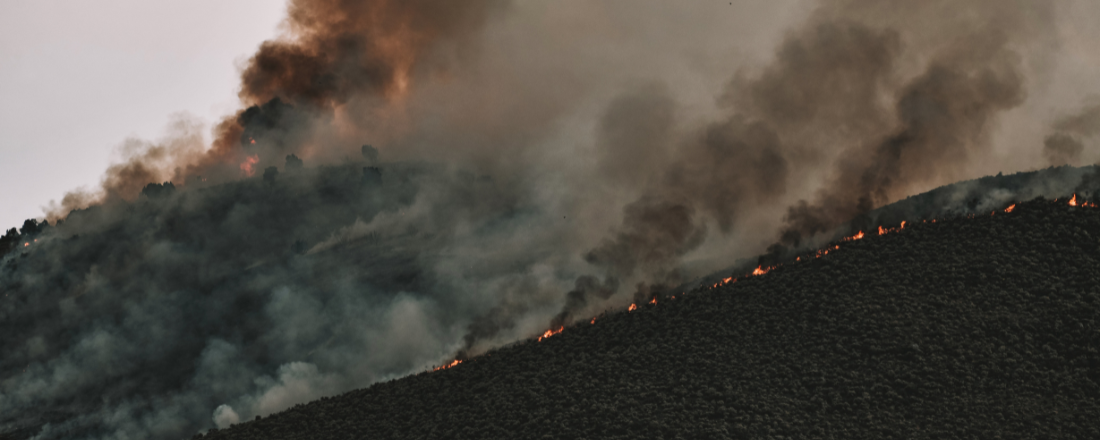
In the News
Community Members Returning to Lahaina, Maui Wildfire Zone Face High Health Risks
- Honolulu Star Advertiser
-
Focus Areas
Environmental Health -
Issues
Climate Change, Wildfires & Extreme Heat -
Expertise
Research – Surveillance, Research – Survey

“More than a month after deadly wildfires ravaged Lahaina, all that remains is a wasteland of ash, debris, charred homes, melted metal and burned-out husks of cars.
While there is, for many survivors, a desire to return to search for sentimental items or a sense of closure, health experts urge people to take caution while in and around these areas as well as on the outskirts of the burn zone due to the toxic waste left behind.
Dr. Diana Felton, state toxicologist for the state Department of Health, urged survivors as early as August to take necessary precautions.
Felton said in a written statement that top hazard concerns in the burn area include toxic contaminants present in debris and ash.
“Debris and ash may include lead, asbestos, arsenic or other hazardous materials,” she wrote. “Dust, dirt, and soot can become airborne and be inhaled.”
Since the burn area in Lahaina includes many buildings constructed before 1970, she said, these contaminants may be present in building materials. Additionally, arsenic used as an herbicide in Hawaii may be present in the soil.
Maui County officials say the disaster area is currently restricted to authorized personnel only.
Officials say at this time, there is no list allowing residents to return to the disaster area in Lahaina, but there will be a “coordinated effort to develop a plan for the safe return of residents.”
Dangers include ash that could contain toxic, cancer- causing chemicals, with debris including broken glass, exposed electrical wire and other objects, officials warn. For those who can return to their properties, county officials urge all people to use personal protective equipment.
An unsafe-water advisory remains in place for Lahaina and Upper Kula.
The U.S. Environmental Protection Agency on Aug. 29 began removing household hazardous materials from properties in Lahaina — a task that is expected to take several months.
That task is considered phase one, to be followed by phase two, the removal of larger debris by the U.S. Army Corps of Engineers.
Gov. Josh Green, in his outline for the future of Lahaina, said residents and businesses will be scheduled in coming weeks — under supervision — to view what remains of their properties.
The grassroots, Native Hawaiian-led group, Aina Momona, recently posted health concerns on Instagram, warning its followers that Lahaina is extremely toxic.
Images of people sifting through ash in their street clothes or walking through a burned home in shorts and slippers gives the impression that post-fire environments are relatively safe.
But this is far from the truth, the group warned, because homes and commercial structures break down into hazardous substances when burned, and ash and soot can be difficult to clean without making them airborne.
Everyone is at risk, with the greatest risk to infants, children, seniors and those with weakened respiratory systems. So people should protect themselves and others with personal protective equipment such as respirators and chemical- resistant gloves, and limit skin contact with soot.
“Aina Momona is deeply concerned about the short and long term health impacts of the fires,” said Trisha Kehaulani Watson, vice president of Aina Momona, in a text statement. “We are mobilizing to providing proper, highly quality PPE to people in West Maui. We are urging more testing and transparency with the test results. People need to understand the hazards, so they can effectively protect themselves and their families.”
Dr. Gina Solomon, principal investigator for the Public Health Institute in California, said it is important not to underestimate the physical hazards.
In a burn zone there are many sharp and jagged pieces of glass and metal in the wreckage which can cause deep puncture wounds and severe lacerations — and these can result in a serious, delayed infection, she said.

For this reason alone, never go into a burned area without having your feet and legs covered and protected.Gina Solomon, MD, MPH
Project Director, Science for Toxic Exposure Prevention, Public Health Institute
Solomon, who assisted in the aftermath of the 2018 fire in Paradise, Calif., warned that black soot is everywhere after a fire. A major ingredient in soot is a group of cancer-causing chemicals known as polycyclic aromatic hydrocarbons, which can damage skin and lungs if breathed in.
Taking measures to avoid skin contact with soot as well as ash is a good idea, she said.
If soot is in the air, then one should wear an N95 mask to protect airways. Wrapping a bandanna around your face, she said, is not going to cut it.
What happens with a fire is that the heat releases hazards, whether it be lead from a car battery or asbestos from a home’s siding.
Additionally, melted plastic and tires can release other toxic chemicals. Survivors should avoid contact with melted plastic, including the burned-out foam found in some sofa cushions.”
To read the full article, click on the link below.
Originally published by Honolulu Star Advertiser
More Updates
Work With Us
You change the world. We do the rest. Explore fiscal sponsorship at PHI.
Support Us
Together, we can accelerate our response to public health’s most critical issues.
Find Employment
Begin your career at the Public Health Institute.



